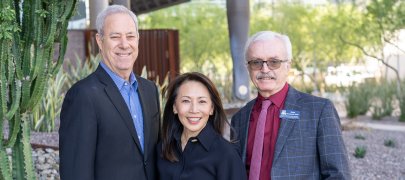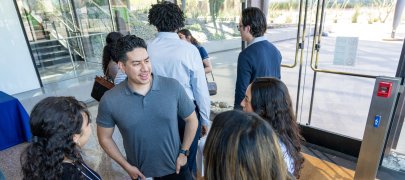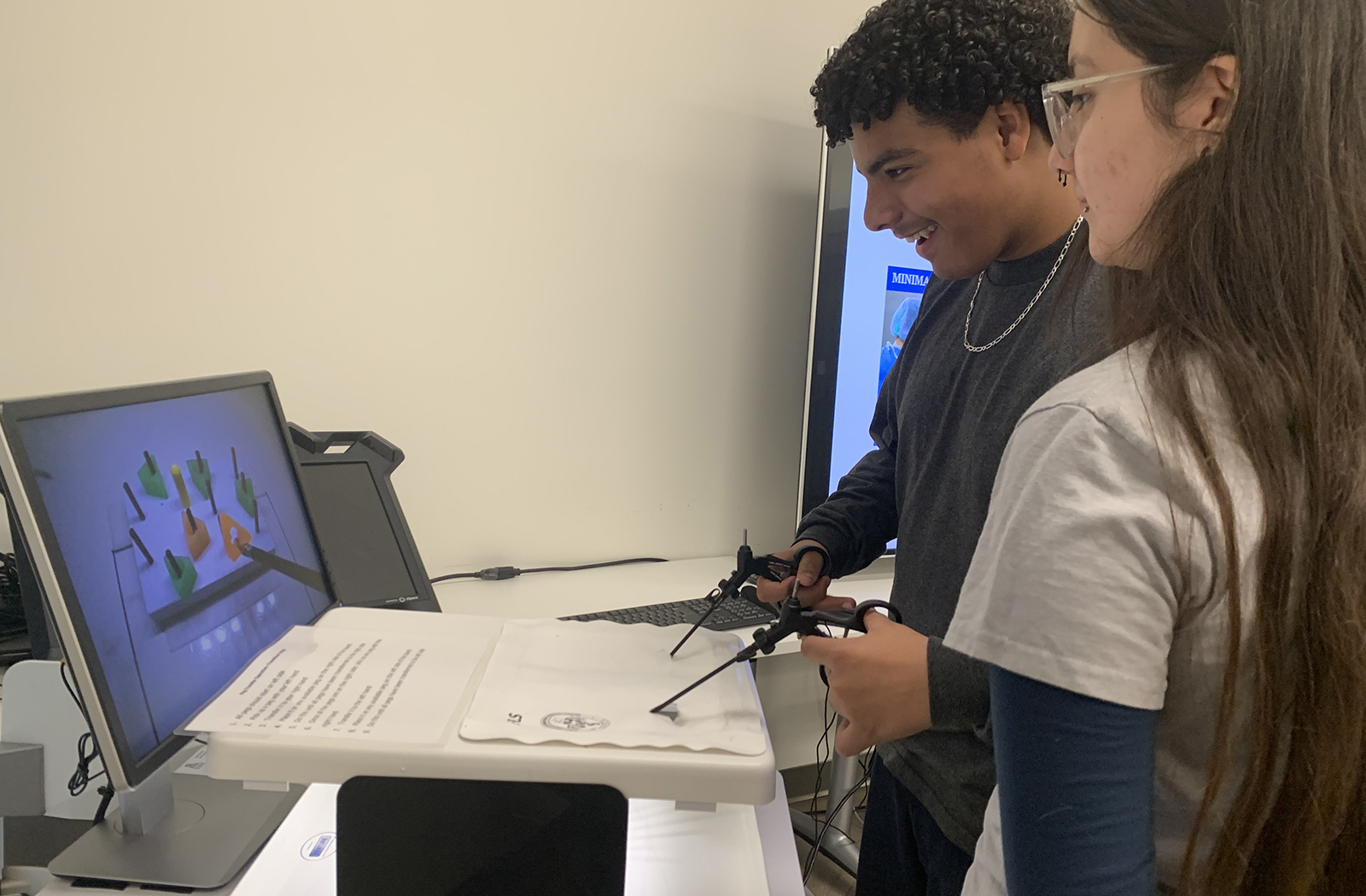
Junior Medicine Program Introduces Local Youth to the Wonders of Medicine

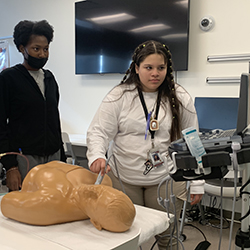
Their immersive day on campus began with a tour of the Health Sciences Library and Medical Museum, where they engaged with medical students — learning about their respective journeys to medical school. Their next stop was the University of Arizona College of Medicine – Phoenix’s Center for Simulation and Innovation. They participated in hands-on simulation activities, including CPR techniques, ultrasounds and ophthalmologic exams. Each student also practiced listening to the heart and taking blood pressure, the basics of splinting and wrapping injuries, and were taught the essential functions of the heart and brain.
Claudia Whitehead, Bioscience Healthcare program manager for the City of Phoenix, was ecstatic with the results of the inaugural event. “The City of Phoenix was proud to partner with the University of Arizona Health Sciences and the Cartwright School District to provide an inspiring day of wonder and curiosity to these 8th graders,” she said. “The engaging, hands-on ‘Junior Med’ experience designed by the College of Medicine – Phoenix medical students created relatability for the 8th graders who ended the day beaming with greater confidence and hope for their own future opportunities. I have no doubt there are future doctors among the group!”
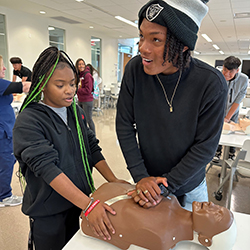
“The majority of these students would be first generation college students, who may not be aware of the educational opportunities ahead of them. Some may come across opportunities that exist later in high school, but this timing may be later than optimal,” Kisiel said. “We understand that by providing these kids early exposure via participation in hands-on activities and discussing the educational opportunities beyond high school, we could foster excitement about the trajectory of their education and future careers.”
Logan-Baca shared in that sentiment, noting their hope for the Junior Medicine Program is to ignite the students’ passion for health care and higher education.
That hope seems to have not only been met but exceeded. Jessica Hauer, director of STEM, College and Career Readiness and Special Areas at Cartwright Unified School District, shared how the principal of Estrella Middle School, Jennae Brittain, felt Junior Med should be a model for all future field trips.
“Her students were so motivated by the trip that they returned to her campus with a new sense of purpose in their learning,” Hauer said. “They explained to her that they walked away from this experience truly feeling that they have opportunities to succeed in life after middle school.”
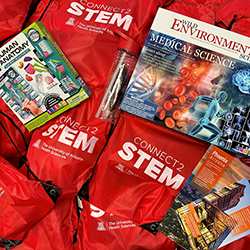
The Junior Medicine Program is funded through community support of the Gila River Indian Community. The next Junior Medicine event will take place in March 2024, and the plan is for it to be a multi-year endeavor. Schools who are interested in participating can contact Caroline Berger for more information.
About the College
Founded in 2007, the University of Arizona College of Medicine – Phoenix inspires and trains exemplary physicians, scientists and leaders to optimize health and health care in Arizona and beyond. By cultivating collaborative research locally and globally, the college accelerates discovery in a number of critical areas — including cancer, stroke, traumatic brain injury and cardiovascular disease. Championed as a student-centric campus, the college has graduated more than 800 physicians, all of whom received exceptional training from nine clinical partners and more than 2,700 diverse faculty members. As the anchor to the Phoenix Bioscience Core, which is projected to have an economic impact of $3.1 billion by 2025, the college prides itself on engaging with the community, fostering education, inclusion, access and advocacy.

